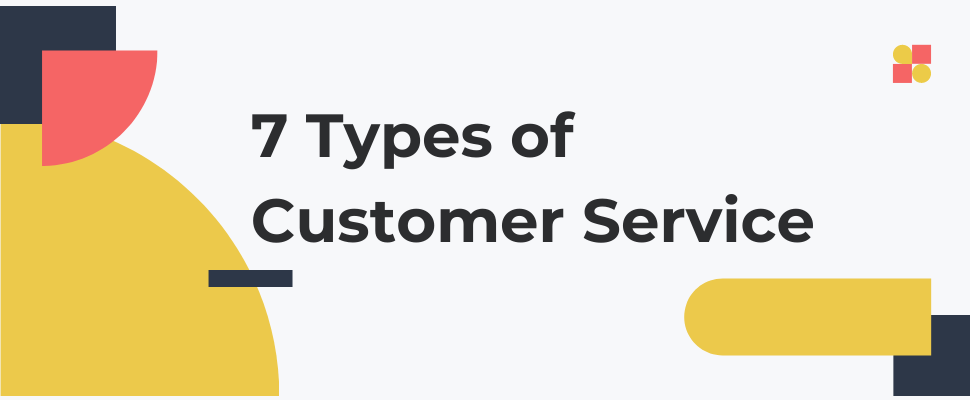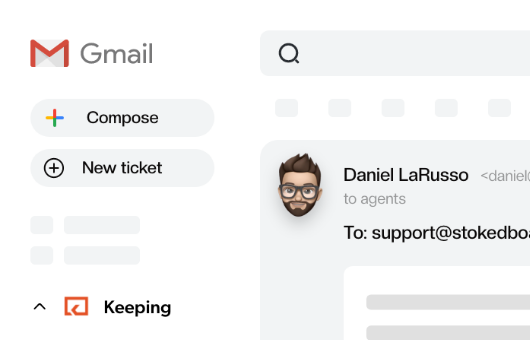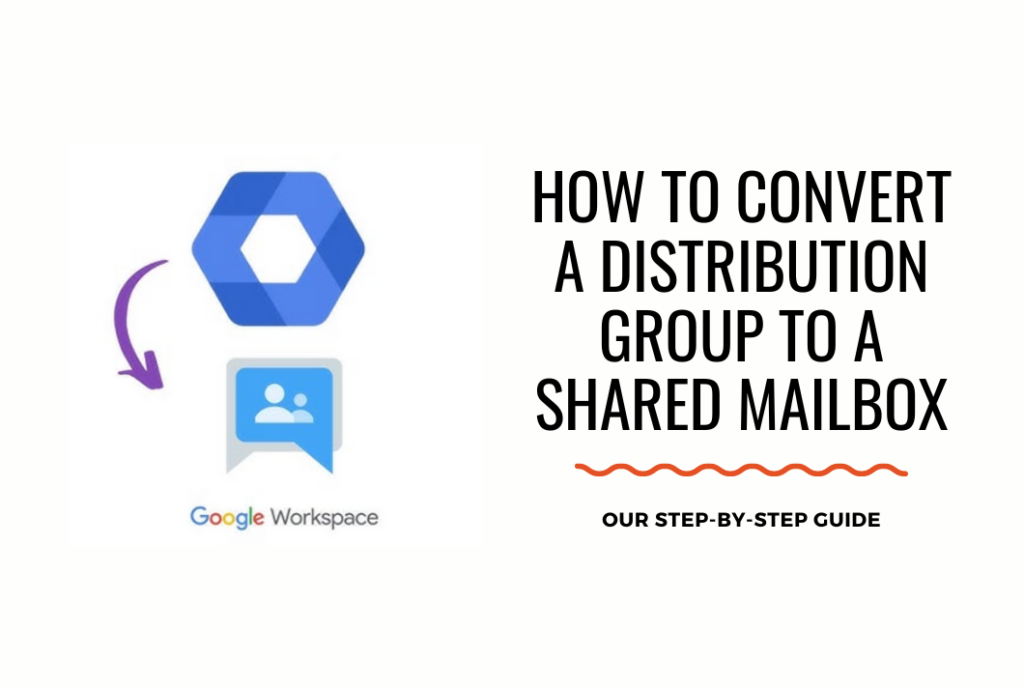
The 7 Types of Customer Service
In order to provide the best level of customer service, companies need to be operating across channels to meet their customers’ needs.
Every customer has had to contact a business for help at some point. And where is the first place you look? Surely the business’s website.
You search for a phone number, an email address, or a live chat widget. Or, you take to social media and contact a business that way.
There are a vast number of channels that customers can connect with businesses on. Being present across channels is key to great customer service. And 35% of customers expect to be able to talk to the same customer service rep on any channel.
Investing in customer service is an important part of any business. Customer service makes all the difference to customer satisfaction, loyalty, and your company’s reputation.
But what are the different types of customer service available?
In this post, we’ll look at 7 different types of customer service out there and discuss what might be a good fit for your business.
What is personalized customer service?
First, let’s talk about the meaning of customer service. Truly personalized customer service is the assistance that your business offers its customers, before, during and after the sale. It requires having fully trained customer support agents available to help your customers with any and all issues they may have.
Before and during the purchasing phase, companies provide customers with information about the products and services they offer. This makes it easier for customers to make a buying decision. At this stage, businesses are engaging in proactive customer service where they take the initiative to contact the customer to find out if they can help.
Then, when a customer has committed to a particular product, the company can provide them with knowledge base content that addresses potential issues.
Customer service is the assistance that your business offers its customers, before, during and after the sale.
As the customer uses the product or service over time, they may get into contact with your company to solve particular problems. This is usually a form of reactive customer service where the business waits for the customer to get in touch before helping them.
There are many types of customer service. Customer service may take place in-person, over the phone, or online through digital channels such as email or live chat. Some (or all) of these customer service channels may be appropriate for your business.
Delivering good customer service is critical for businesses who want to maintain a competitive edge and retain their customers in the long-term. 96% of customers said customer service was an important factor in determining their loyalty to a brand.
When customers feel like they can approach a business and reasonably expect to have their problem resolved, it makes them more likely to purchase from you again. If you really impress them with your customer service, they may even tell their friends and family about it or post positive reviews online.

7 types of customer service
Now, we’ll go into the 7 types of customer service that your business can use to assist your customers.
1. Phone support
Despite the growing popularity of digital communication channels, customers still use the phone to contact a company’s support team. Customers use their phone to call a company’s telephone number and explain their problem verbally.
Of all the customer service options, phone service remains as popular as ever and is often the bread and butter of a company’s customer support strategy. It is an effective way to solve complex issues and facilitates a personal interaction with the customer.
More than 50% of customers across all age groups typically use the phone to reach out to a service team, which makes it the most used channel for customer service.
So, it’s important to invest in phone customer service for your company. Call centers have turned into contact centers that handle all manner of customer interactions, from phone, to chat, to email. They use customer relationship management (CRM) software to keep track of their customers and offer a cohesive support experience and interactive voice response.
However, don’t implement phone customer service if you can’t keep up with the influx of customer enquiries. 60% of customers said long hold times were the most frustrating parts of a service experience, which will cause your business’s reputation to suffer. Make sure to hire as many agents as needed to adequately handle your workload.
Pros of phone customer support
- Can offer a personal interaction for customers
- Offers quality support for people of all age groups
Cons of phone customer support
- Long wait times lead to customers leaving the business
- Phone calls are resource intensive and a high-cost channel
2. Email support
Email is another core channel for businesses looking to deliver top-quality support to their customers. Customers usually reach out to a particular email address which is displayed on the company’s website in order to send messages to the customer support team.
It’s cheaper than phone support and agents have more time to compose their response to the customer’s enquiry. They can make use of canned responses to save time when replying to customers, and link customers to relevant knowledge base articles.
The most commonly used digital communication channel is still email, with 54% of customers using it to reach out to customer service in the last year. Customers find email support a convenient way to contact customer service as they can move on with their day while waiting for a reply from the support team. This makes it perhaps the most popular type of customer service for online businesses.
Email is a helpful channel for complex technical issues as customers can take the time to compose their message and attach screenshots or other images to the email.
On the other hand, it can be hard for companies to keep track of the emails they receive unless they invest in dedicated help desk software that converts your emails into tickets. Consider Keeping, which is a powerful extension for Gmail that turns your email inbox into help desk ticketing software.
Pros of email support
- Agents can take their time to compose replies and make use of canned responses
- Having the issue written down provides a paper trail for the future
Cons of email support
- Hard to read the tone of a customer in written format
- Long wait times over email can lead to angry customers
3. Live chat support
Live chat is an emerging support channel that is proving very popular with customers due to its fast and immediate nature. 75% of online customers expect help within five minutes and this is where live chat comes in helpful.
Customers use live chat to message with support agents through a company’s website. They can receive answers to their questions and solutions to their problems, relatively instantly.
One of the best things about live chat for businesses is the ability to conduct multiple conversations at once. This reduces support costs and gives live chat an advantage over other channels like phone support.
73% of customers find live chat to be the most satisfactory form of communication with a company. When you invest in live chat, you are meeting the customer’s needs.
Live chat also allows businesses to offer proactive customer service. By initiating a conversation with customers before they even ask for help, you are reducing the perceived effort it takes to interact with your business and making it more likely that customers will buy from you.
Pros of live chat support
- It’s possible to handle multiple conversations at the same time
- Offer self service support during the shopping experience and increase sales
Cons of live chat support
- May not be a viable option for older customers
- Agents are under pressure to provide an instant response
4. Chatbot support
Businesses have the option of automating away some of the most repetitive customer queries by implementing a chatbot. A chatbot is a virtual assistant that is available 24/7. Customers type their question into the chatbot and receive an answer instantly. Offering self service support can help customers get what they need, quickly.
The good thing about chatbots is they never sleep. 64% of internet users say that the best thing about chatbots is the 24-hour service. And chatbots are able to answer 80% of standard questions, which makes them a useful supplement for your human agents. This frees up your team to focus on the more complex and challenging tasks.
However, you have to be careful with chatbots because 30% of consumers said not being able to reach a real human was the most frustrating part of a bad customer service experience. A chatbot should not be a replacement for real, human support.
If a chatbot cannot resolve a customer’s issue, it should be able to route the customer to a live agent who can provide assistance.
Pros of chatbot support
- Always available for customers even outside normal support hours
- Can automatically share links to related self-service articles
Cons of chatbot support
- Not a replacement for a real human and can frustrate customers
- Chatbots can appear robotic and lacking in personalization
- Not a great way to provide technical support
5. Social media support
Social media channels have become more than just a platform where users have conversations with friends and family. Businesses must maintain a strong presence on social media to interact with customers where they are spending their time and offer customer service.
95% of consumers between 18 and 34 are likely to follow a brand through social media channels. This makes it understandable that customers are likely to use social media to reach out for customer service. Whether you want to use social media for customer service or not, customers are using it regardless.
Social media is a fast-faced customer service channel for businesses. 40% of customers who complain on social media expect a response within one hour.
The distinguishing factor for social media channels is that most interactions are public, so your quality of customer service is on show for all to see. This makes it even more important for businesses to provide excellent customer service on social media, because it protects your reputation as well as satisfies customers.
Pros of social media support
- Can interact with customers through their most-used apps
- Creates opportunities for customers to share positive experiences
Cons of social media support
- Conversations are public which puts more pressure on your support team
- A high level of customer expectation to provide a fast response
- Many social media platforms to monitor
6. Self-service knowledge base
Self-service knowledge bases are critical for businesses who want to help more customers and at the same time decrease the load on their support team. This is a type of customer service where the customer helps themselves, sometimes through an online portal.
Customers can self-serve by consulting your library of support articles, ranging from how-to guides, troubleshooting guides, product information, and much more. Your knowledge base is usually a link from your main company website, either from the footer or the menu.
69% of customers first try to solve their issue on their own, but less than a third of companies offer a self-service option such as a knowledge base. The majority of customers would rather help themselves before reaching out to a human.
Most customers begin their search for information online. You need to focus on SEO to make sure your knowledge base shows up in search results, so you are meeting customers where they are.
One of the major benefits of a knowledge base is that your customer support load is significantly lessened. When more customers self-serve, agents are freed up from responding to repetitive queries and able to focus more time on the more complex cases. You can help more customers with the same manpower, lowering costs and enhancing productivity.
However, not all customer queries can be solved by the knowledge base, and it’s important to include your support team’s contact details so customers can reach a real person if necessary.
Pros of self-service knowledge base
- Your knowledge base is always available for customers searching for answers
- Reduces the support ticket volume for your team
Cons of self-service knowledge base
- Your knowledge base requires ongoing maintenance
- May not cover all possible customer problems or queries
7. In person customer service
Brick-and-mortar customer service is offered on-site at a business’s physical store. There are some customer service interactions that can only take place in person, such as repairing a faulty item or returning unwanted goods.
Interacting with customers in person gives businesses the opportunity to create more memorable moments and deepen the relationship. It’s easier to read customer emotions and gain valuable feedback about the customer experience.
Of all the customer service types, the challenge with this type of service is creating the speed and efficiency that customers have come to expect with online transactions. It should be just as easy for an employee to check whether an item is in stock from the store floor as it is for the customer to consult the company’s website.
Physical interactions with customers means customer support reps are under pressure to provide instant service. There is also no buffer between your reps and an angry customer, making this the most high-pressure support channel.
Pros of bricks-and-mortar customer service
- It’s easier to understand customer problems during an in-person interaction
- There’s the opportunity to recommend similar products to customers
Cons of bricks-and-mortar customer service
- It’s expensive to operate a physical location
- Costs the customer time and money to travel to the store
Which types of customer service are the best for you?
Hopefully by now you’ll understand all the different types of customer service that are available to your business. The next question is, which customer service solution should you offer at your company?
It’s generally not a good idea to try to cover all the different channels that are available to you. You might find you spread yourself too thin and the standard of service suffers.
Consider what resources you have available, both in terms of time and money as well as customer support reps.
Could you use technology to make your customer service job easier? For example, using Keeping for Gmail to streamline your email customer service will save you time that could then be devoted to social media customer service, for example.
Consider whether a self-service knowledge base would be a good long-term investment, as well as a chatbot. When you save time in customer service, you can cover more channels with the same number of people working for you.
Final remarks
In order to provide the best level of customer service, companies need to be operating across channels to meet their customers’ needs. Some digitally-minded customers may be expecting social media and live chat, while some more traditional customers will be happy with email and phone support.
It’s all about providing the best possible service across the range of channels that makes sense for your business. Unless you have unlimited resources, it’s unlikely you will be able to serve every channel equally.
Some channels are more cost-effective for your business. Self-service knowledge bases and chatbots serve customers with no human intervention, freeing you up to focus on the more complicated cases across other channels.
Join 150+ teams that are sharing inboxes with us
The easiest way to upgrade your shared Gmail account. There’s no credit card is required.






